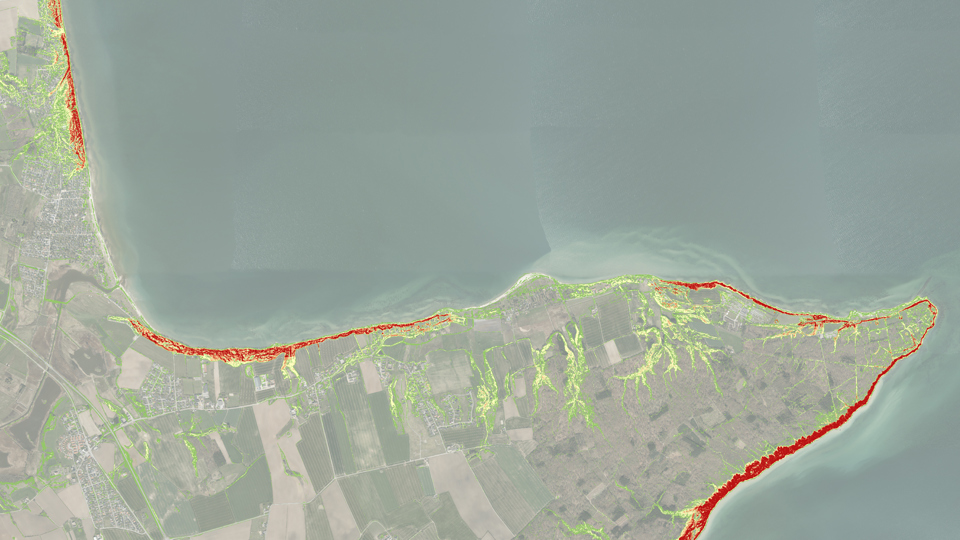By Susanne Togeby, Communication Specialist, AAU Communication and Public Affairs. Translated by LeeAnn Iovanni, AAU Communication and Public Affairs
At the beginning of January 2024, several landslides occurred on Møns Klint where a large section of the point collapsed and slid 200 meters into the sea. According to local media, tourists were nearby who both saw and felt the landslide, but fortunately no one was injured.
In the interest of safety, Møns Klint was closed to the public, but only after the landslides had occurred, which was actually too late. For it is not yet possible to predict when landslides will occur in Denmark.
But in fact, thanks to a group of students in surveying at Aalborg University, it is technically possible to determine the risk of landslides in an area. The four students developed a model that uses artificial intelligence to calculate the probability of landslides.


